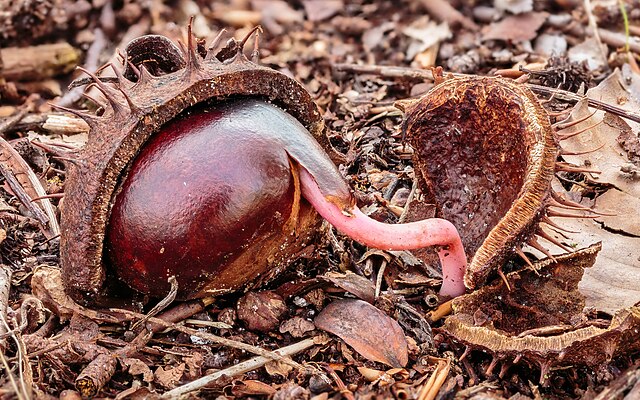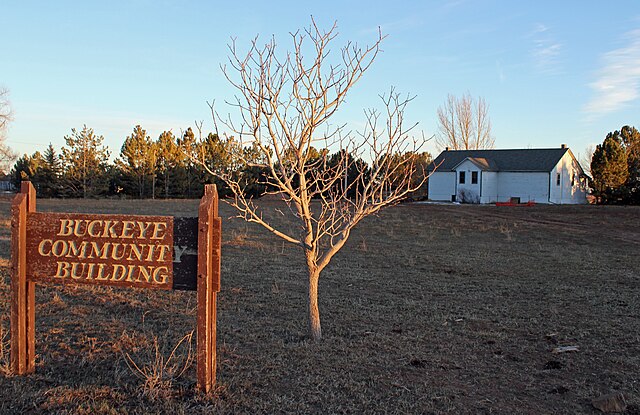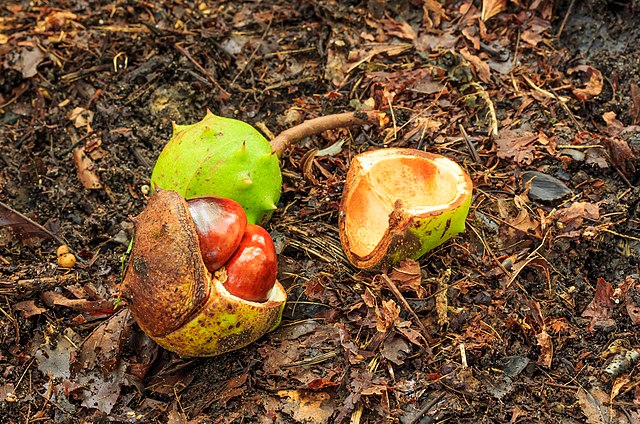Have you ever wondered what exactly a buckeye is? Maybe you’ve heard the term thrown around in connection with Ohio or spotted these shiny brown nuts during autumn walks. You’re not alone in your curiosity! Buckeyes are fascinating natural treasures that have captured American hearts and imaginations for generations.
A buckeye refers to both the tree (Aesculus species) and its distinctive nut-like seeds. These remarkable trees produce glossy, mahogany-colored seeds that bear an uncanny resemblance to a deer’s eye – hence the name “buckeye.” But there’s so much more to these incredible plants than meets the eye.
Understanding the Buckeye Tree
Buckeye trees belong to the horse chestnut family (Hippocastanaceae) and are native to North America. These deciduous trees have earned their place in American folklore, state symbols, and even sports culture. Think of them as nature’s own good luck charms, wrapped in a hard, protective shell.
The buckeye tree isn’t just one species – it’s actually a whole family of related trees that share similar characteristics. What makes them special? Well, imagine a tree that produces its own natural marbles, each one polished to perfection by Mother Nature herself.
Physical Characteristics of Buckeye Trees
Buckeye trees are medium-sized beauties that typically reach heights of 20 to 40 feet, though some species can grow taller. Their most distinctive feature is their palmate leaves – think of them like nature’s hand, with five to seven leaflets spreading out from a central point like fingers.
During spring, these trees put on quite a show with their showy flower clusters. The flowers, called panicles, stand upright like colorful candles on the branches. They’re usually white, yellow, or red, depending on the species. It’s like the tree is throwing its own little celebration!
The bark of mature buckeye trees is grayish-brown and develops a scaly texture as it ages. Young trees have smoother bark that gradually roughens over time – much like how our own skin changes as we age.
Different Species of Buckeye Trees
Not all buckeyes are created equal! There are several species, each with its own personality:
The Ohio Buckeye (Aesculus glabra) is probably the most famous, thanks to its connection with the Buckeye State. This tree produces yellow flowers and grows throughout the Midwest.
The Red Buckeye (Aesculus pavia) is a southeastern native that sports gorgeous red flowers. It’s smaller than its Ohio cousin but makes up for it with stunning spring blooms.
The Yellow Buckeye (Aesculus flava) is the giant of the family, sometimes reaching 80 feet tall. It’s also called the sweet buckeye and produces yellow flowers.
The Painted Buckeye (Aesculus sylvatica) is a rare beauty found in the southeastern United States, with flowers that range from yellow to red.
The Buckeye Nut: Nature’s Fascinating Seed

Now, let’s talk about the star of the show – the buckeye nut itself. These aren’t technically nuts at all, but rather seeds encased in a leathery capsule. The tree produces these seeds in late summer to early fall, and they’re quite the sight to behold.
What Does a Buckeye Look Like?
Picture this: a glossy, mahogany-brown seed about the size of a large marble, with a lighter-colored patch that looks remarkably like an eye. That lighter spot is called the hilum – it’s where the seed was attached to the pod. The resemblance to a deer’s eye is so striking that early settlers immediately dubbed them “buckeyes.”
Fresh buckeyes have a rich, chocolate-brown color with a beautiful natural shine. They feel smooth and substantial in your hand, almost like a polished stone. The hilum creates a perfect contrast, usually appearing as a tan or light brown circle that really does look like an eye gazing back at you.
Are Buckeyes Edible?
Here’s where we need to talk safety. Raw buckeyes contain compounds called saponins, which can be toxic if consumed in large quantities. So while they might look tempting, they’re not meant for snacking!
However, Native Americans historically processed buckeyes to remove the toxic compounds, creating a food source during lean times. This involved extensive leaching and preparation – definitely not something to try at home without proper knowledge and expertise.
Some animals, like squirrels, can process small amounts of buckeyes, but it’s best to admire these beautiful seeds rather than taste them. Think of them as nature’s decorative objects rather than food.
Where Do Buckeyes Grow?
Buckeyes are primarily North American natives, with different species adapted to various regions across the continent. They’re not found everywhere – these trees have specific preferences when it comes to their living conditions.
Natural Habitat and Growing Conditions
Buckeyes generally prefer rich, moist soils and partial shade, though they can tolerate full sun. They’re often found in woodland areas, along streams, and in river valleys where the soil stays consistently moist.
These trees are surprisingly adaptable when it comes to soil types, but they really thrive in well-draining, fertile ground. They don’t like their feet too wet or too dry – think of them as the Goldilocks of the tree world, wanting everything just right.
Most buckeye species are hardy in USDA zones 4 through 8, making them suitable for much of the eastern and central United States. They’re not fans of extreme heat or drought, which is why you won’t typically find them in desert regions.
Buckeyes in Different Regions
The Ohio Buckeye, as its name suggests, is most abundant in Ohio but also grows throughout the Midwest, including parts of Pennsylvania, West Virginia, Kentucky, and Indiana. It’s perfectly adapted to the region’s climate and soil conditions.
Southern species like the Red Buckeye prefer the warmer climates of the southeastern United States, from Texas to Florida and up through the Carolinas. These trees have adapted to handle more heat and humidity than their northern cousins.
The Yellow Buckeye has perhaps the most limited range, primarily found in the Appalachian Mountains and surrounding areas. It’s a mountain lover that enjoys cooler temperatures and higher elevations.
The Ohio Connection: Why Buckeyes Matter

You can’t talk about buckeyes without discussing Ohio. The connection between this state and these trees runs deeper than just sharing a name – it’s woven into the very fabric of Ohio’s identity.
Ohio State Buckeyes and Sports Culture
The Ohio State University’s athletic teams are known as the Buckeyes, and their fans are some of the most passionate in college sports. The buckeye nut has become a symbol of Ohio pride, worn as jewelry, carried as good luck charms, and even incorporated into team traditions.
Buckeye fans often carry actual buckeye nuts to games, believing they bring good luck to their team. It’s become such a tradition that you’ll see buckeye necklaces, keychains, and other memorabilia throughout Ohio and beyond.
The mascot, Brutus Buckeye, represents this connection between the tree, the nut, and Ohio pride. It’s amazing how a simple seed has become such a powerful symbol of state identity and athletic tradition.
Buckeye as Ohio’s State Tree
Ohio officially adopted the buckeye as its state tree in 1953, cementing the relationship between the tree and the state. This wasn’t just a random choice – buckeyes had been associated with Ohio for over a century by that point.
The designation recognizes not just the tree’s presence in Ohio, but also its cultural significance. It’s a living symbol of Ohio’s natural heritage and the connection between the state’s people and its landscape.
Buckeye Folklore and Superstitions
Buckeyes have accumulated quite a collection of folklore and superstitions over the years. These beliefs have been passed down through generations and continue to influence how people view these remarkable seeds.
The Lucky Buckeye Tradition
The most widespread belief is that carrying a buckeye brings good luck. This tradition is so strong that many people carry buckeyes in their pockets, purses, or wear them as jewelry. The belief likely stems from the eye-like appearance of the seed – many cultures consider eye symbols protective against evil.
Some folks believe that buckeyes can help with arthritis pain when carried in a pocket. While there’s no scientific evidence for this, the tradition persists, and many people swear by it. Whether it’s the power of positive thinking or something else entirely, the belief brings comfort to many.
Others think buckeyes can help with financial luck or general good fortune. College students often carry them during exams, and athletes might keep them for good luck during competitions.
Native American Connections
Native American tribes had their own relationships with buckeye trees and seeds. Some tribes used buckeyes in traditional medicine, while others incorporated them into spiritual practices and ceremonies.
The Cherokee, for example, had traditional uses for buckeye trees, using various parts of the plant for different purposes. The seeds were sometimes used in games and ceremonies, though always with proper preparation and respect for the plant’s properties.
These historical connections remind us that buckeyes have been meaningful to people for far longer than just modern times. They represent a continuous relationship between humans and the natural world.
Uses of Buckeyes Throughout History

Throughout history, people have found various ways to use buckeyes and buckeye trees. While we need to be careful about the toxic properties of raw buckeyes, there are some fascinating historical applications.
Traditional Medicine and Remedies
Historically, various parts of the buckeye tree were used in folk medicine, though we must emphasize that these uses are not recommended without proper medical supervision. Native Americans and early settlers sometimes used processed buckeye preparations for various ailments.
The bark and leaves were sometimes used to make poultices or teas, though the toxic compounds in the plant made this risky. Traditional healers had specific knowledge about preparation methods that reduced toxicity, but this knowledge was complex and not easily replicated.
It’s important to note that modern medicine has much safer and more effective treatments for the conditions that buckeyes were historically used to treat. These historical uses are fascinating from a cultural perspective, but they’re not safe to attempt today.
Modern Applications and Research
Today, scientists are studying buckeye compounds for potential medical applications. The saponins that make raw buckeyes toxic are also being researched for their potential therapeutic properties when properly processed and purified.
Some research has focused on anti-inflammatory compounds found in buckeye trees. While this research is promising, it’s still in early stages, and any therapeutic applications would require proper pharmaceutical development and testing.
The wood of buckeye trees has also found uses in woodworking and crafts. It’s light-colored and relatively soft, making it suitable for carving and other applications where a lightweight wood is needed.
How to Identify a Real Buckeye

With all the interest in buckeyes, it’s important to know how to identify the real thing. Not every brown seed you find is a buckeye, and there are several look-alikes that can fool the untrained eye.
Distinguishing Features
A real buckeye has several key features that set it apart from imposters. First, look for that distinctive eye-like marking – the hilum should be large, light-colored, and roughly circular. This is the most reliable identifying feature.
The size should be substantial – typically between 1/2 inch to 1 1/2 inches in diameter, depending on the species. The color should be a rich, glossy brown, almost like polished mahogany. Fresh buckeyes have a natural shine that’s hard to fake.
The shape should be roughly round but not perfectly spherical. Real buckeyes often have a slightly flattened area where they sat in the pod with other seeds. The surface should be smooth and hard, not soft or pitted.
Common Look-alikes
Several other seeds and nuts can be confused with buckeyes. Horse chestnuts, which are related to buckeyes, are often mistaken for them. However, horse chestnuts are usually larger and have a different hilum pattern.
Acorns without their caps might be confused with buckeyes, especially when they’re weathered and darkened. However, acorns have a completely different shape and texture, and they lack the distinctive eye marking.
Some tropical seeds, like those from certain palm trees, can look similar to buckeyes but are typically larger and have different markings. When in doubt, consider where you found the seed – if it’s not in buckeye territory, it’s probably not a buckeye.
Collecting and Preserving Buckeyes
If you’re interested in collecting buckeyes, there are some tips and tricks that can help you find the best specimens and keep them looking great for years to come.
Best Time to Collect
The best time to collect buckeyes is in early to mid-fall, typically September through October, depending on your location. This is when the pods split open and release their seeds. Fresh buckeyes will have the best color and shine.
Look for buckeyes that have recently fallen from the tree. They should still be glossy and free from cracks or damage. Avoid buckeyes that have been on the ground for a long time, as they may have started to dry out or develop problems.
The best collecting happens after a windy day or storm, when fresh buckeyes have been knocked from the trees. Early morning collection often yields the best results, as you’ll beat other collectors to the good specimens.
Storage and Preservation Methods
To keep your buckeyes looking their best, proper storage is essential. Fresh buckeyes should be cleaned gently with a soft cloth to remove any dirt or debris. Don’t use water or cleaning solutions, as these can damage the natural finish.
Store buckeyes in a cool, dry place away from direct sunlight. Excessive heat or moisture can cause them to crack or lose their shine. Some people like to store them in small boxes or containers with a little bit of padding to prevent damage.
If you want to preserve the shine, you can occasionally polish buckeyes with a soft cloth. Some collectors apply a very light coat of clear finish, but this changes the natural appearance and isn’t necessary for preservation.
Conclusion
Buckeyes are far more than just seeds – they’re living symbols of American natural heritage, cultural tradition, and the enduring connection between people and the land. From their distinctive appearance that earned them their name to their deep roots in Ohio culture and beyond, buckeyes continue to fascinate and inspire.
Whether you’re drawn to their supposed lucky properties, their role in sports culture, or simply their natural beauty, buckeyes offer something special. They remind us that nature creates its own treasures, each one unique and worthy of appreciation.
The next time you encounter a buckeye, take a moment to appreciate the remarkable tree that created it and the rich history it represents. These humble seeds carry with them generations of stories, beliefs, and connections to the natural world that surrounds us.
Remember, while buckeyes make wonderful collectibles and conversation pieces, they should be appreciated for their beauty rather than consumed. Their true value lies not in what they can do for us, but in what they represent – the enduring power of nature to create beauty, inspire wonder, and connect us to something larger than ourselves.
Frequently Asked Questions
1. Are buckeyes poisonous to touch?
No, buckeyes are perfectly safe to handle and touch. The toxic compounds are only dangerous if consumed in large quantities. You can safely collect, carry, and handle buckeyes without any risk.
2. How can I tell the difference between a buckeye and a horse chestnut?
While they’re related, horse chestnuts are typically larger and have a different hilum pattern. Buckeyes have a single, large, light-colored eye marking, while horse chestnuts often have smaller, less distinct markings. The trees also have different leaf patterns and flowers.
3. Do buckeyes really bring good luck?
There’s no scientific evidence that buckeyes bring good luck, but the tradition is deeply rooted in folklore and continues to bring comfort and confidence to many people. Whether the luck is real or psychological, the positive association many people have with buckeyes is genuine.
4. Can I grow a buckeye tree from the seed?
Yes, buckeye seeds can be planted to grow new trees, but they require specific conditions and treatment. The seeds need cold stratification over winter and should be planted in spring. However, not all buckeyes will germinate, and growing conditions must be right for successful growth.
5. Why are buckeyes associated specifically with Ohio?
Ohio’s nickname “The Buckeye State” comes from the abundance of buckeye trees that early settlers found there. The association grew stronger over time, eventually leading to Ohio adopting the buckeye as its state tree and Ohio State University adopting the Buckeyes as their team name. The connection has become a source of state pride and identity.

